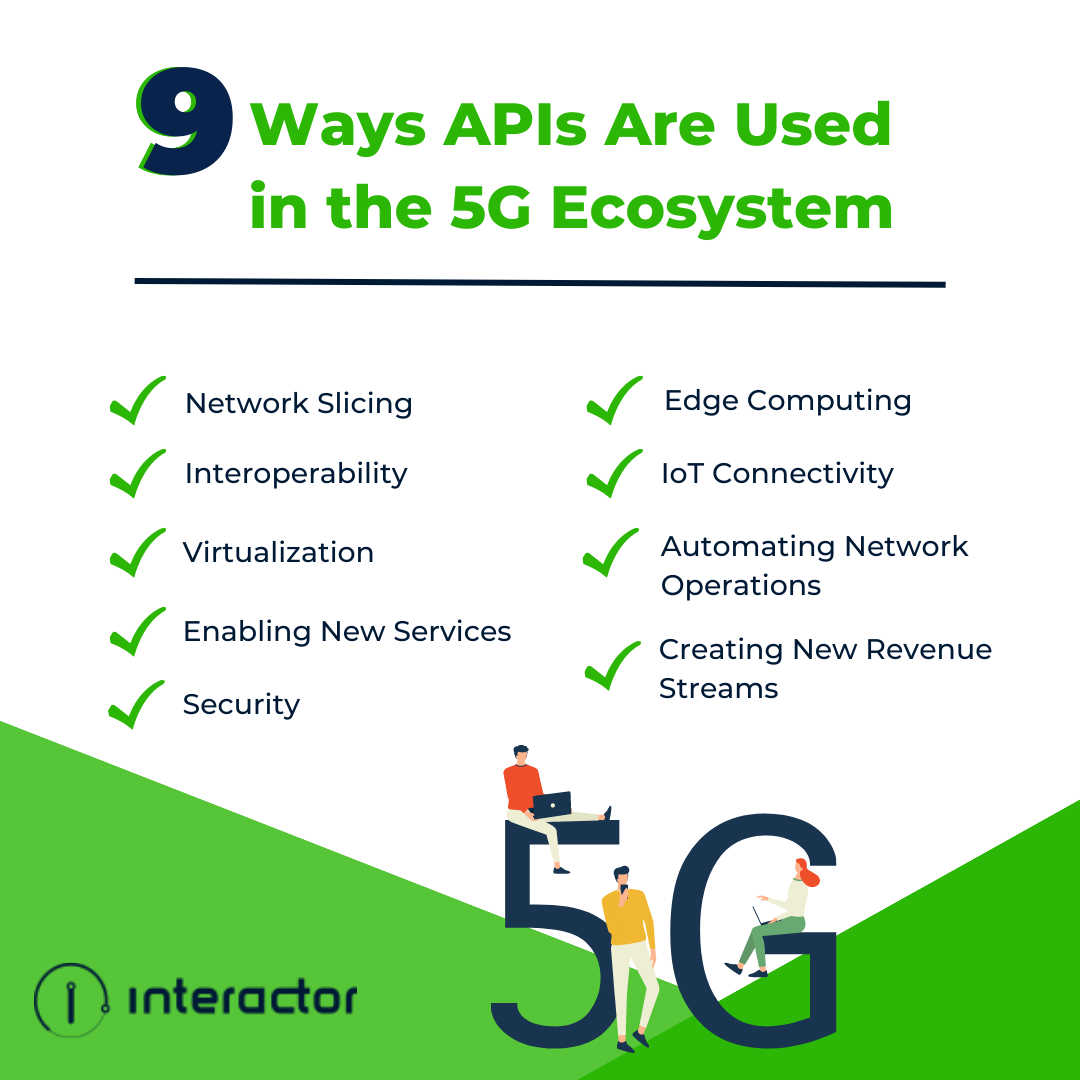How is API Used in Telco 5G?
API is becoming a crucial component of the telecommunications industry's infrastructure that powers 5G networks. They allow different systems and applications to communicate and share data, enabling new capabilities and services for mobile network operators and their customers. They also allow for more efficient network management through use cases such as network slicing and virtualization.
From automating network operations to enabling new revenue streams through partnerships, APIs are helping to drive the next generation of mobile connectivity and operations.
9 Ways APIs Are Used in the 5G Ecosystem:
APIs in 5G networks allow telcos to create new services, manage their infrastructure more effectively, and connect to a wide range of devices and systems. Using APIs in 5G networks allows telcos to be more flexible and adaptable, offering new services and revenue streams. Additionally, APIs enable telcos to offer different levels of quality of service and to create virtualized network functions, improving the responsiveness and reliability of services.

- Network Slicing: Telcos can use APIs to create and manage virtual slices of their 5G network infrastructure. This allows offering many new services and different levels of quality service to their customers.
- Automating Network Operations: APIs can automate the management of network resources, such as radio access networks, core networks, and edge computing resources. This can help mobile network operators improve their networks' efficiency and reliability while reducing costs.
- Virtualization: Telcos can use APIs to manage virtualized network functions (VNFs) and software-defined networking (SDN) in their 5G networks. This allows them to create and manage virtual versions of network functions.
- Enabling New Services: APIs can expose network resources to third-party developers, who can then use them to create new services and applications. For example, 5G networks can enable new use cases, such as virtual reality, augmented reality, and the Internet of Things, that require low latency, massive connectivity, and high bandwidth.
- Creating New Revenue Streams: By exposing network resources through APIs, mobile network operators can create new revenue streams through partnerships with third-party developers and service providers. This can help to monetize their networks and create new business models.
- Interoperability: APIs enable interoperability between network elements and vendors, allowing for greater flexibility and scalability in network deployment and management.
- Security: With the use of APIs, operators can implement more granular access control, ensuring that only authorized parties can access network resources and that those resources are used in compliance with security and regulatory requirements.
- Edge Computing: Telcos can use APIs to manage edge computing resources in their 5G networks. This allows them to bring computing and storage resources closer to end-users, improving the responsiveness and reliability of services.
- IoT Connectivity: Telcos can use APIs to manage the connectivity of IoT devices to their 5G networks. This allows them to create and manage device management, data collection, and processing services.
The flexibility and simplicity of the no-code product API AutoFlow bring additional opportunities to create new use cases in Telco 5G networks.
Interested in API AutoFlow?
Take a look at API AutoFlow and see how it can help your telecommunications organization. Reach out to schedule a call.

April 12, 2023

Comments